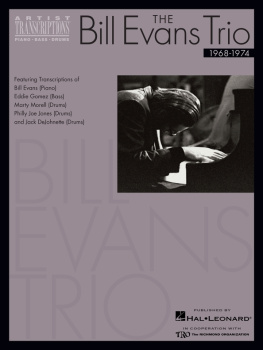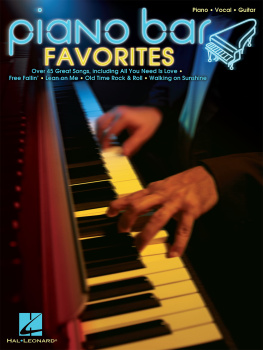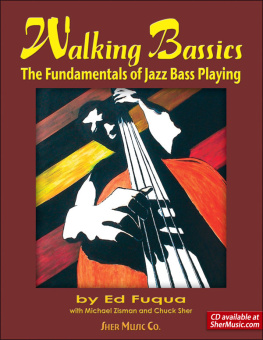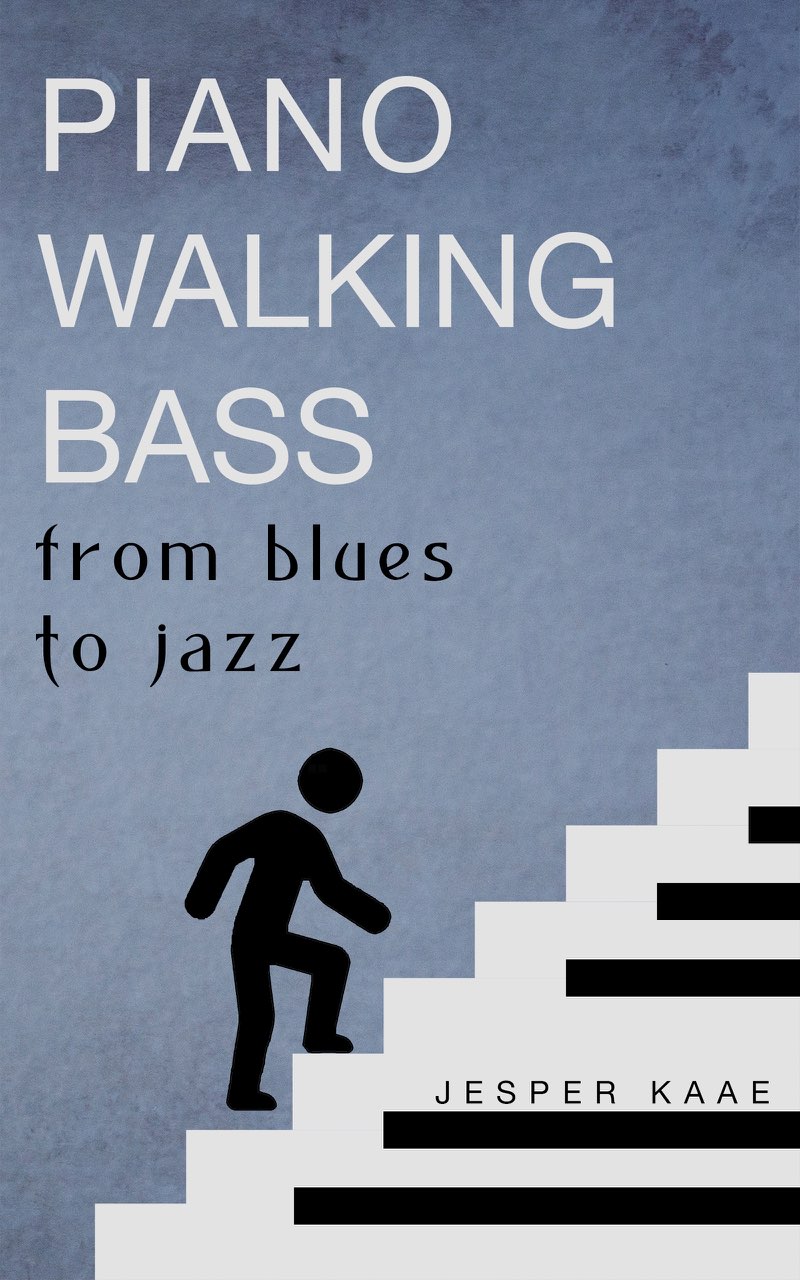Piano Walking Bass
From blues to jazz
Jesper Kaae
Sonora Publishing
Copyright 2019 Jesper Kaae
www.jesperkaae.com
Sonora Publishing
All rights reserved
ISBN: 978-87-931-40-17
Audio files available at
www.jesperkaae.com
Piano Walking Bass
W alking bass is an essential element in blues and jazz music. The walking bass characterized by a new note on every beat in the bar is a moving force that pushes the music forward and creates richness to the arrangement. In a jazz band the accompaniment of the pianist is often sparse, because of the richness of the bass .
But as a solo pianist you can create some of the same richness by playing a walking bass yourself. Many solo pianists stop developing their left hand after learning a basic octave bass and it may be challenging to play new notes on every beat in the bar in the left hand and at the same time play the melody and harmony or even improvise a solo in the right hand. But the effort will pay off as rich sounding blues and jazz melodies and as a bonus you can fire the other band members .
The arrangements in this book have a progression going from easy to intermediate and going from blues towards jazz and ends with a brief introduction to other genres. We will look at some simple but effective rules for making great walking bass lines and we will bend the rules again to create even more interesting lines .
Audio files for all examples in this book are available at www.jesperkaae.com
To
Chord based walking bass
W hen playing chords on the piano each chord can have different inversions. A triad can be played in root position or in two different inversions. Extended chords have even more inversions .
Root position
First inversion
Second inversion
In order to define any chord played by the right hand on the piano we use the left hand to establish and to emphasize the chord. Often you dont play the root note in the right hand when playing blues and jazz. Therefore the root note is the most important note to play in the left hand, and you do not necessarily have the same freedom in choosing inversions even though other notes can be used as well .
E x. 2a
However, there isnt much walking in playing the root note only. If we include one more note we can create an alternating bass .
E x. 2b
By alternating between the root and the octave the bass starts moving but its more jumping up and down than actually walking. That doesnt mean that note repetitions and octaves cant be used in walking bass lines as we shall see later but we still need some other notes to make the bass walk .
The most common note to alternate between in the bass is the fifth. Alternating bass is often used in country, folk, and bluegrass music but is very common in blues and jazz as well. What is also referred to as a two beat bass is here sometimes seen in combination with a four beat walking bass .
E x. 2c
Still the bass doesnt really walk. Maybe waddling is a better word, even though two beat bass lines have a really nice feel to them. Later on we will have a look at some ways to improve the two beat bass by adding ornamentation .
Now lets walk. We start with a walking bass based entirely on chord notes. In a blues in C the chords would be C, F and G with a minor seventh added to all the chords. Chords are made by stacking thirds on top of each other. A major third plus a minor third make a major triad. Thus a C major triad consists of the notes c, e and g and these are the notes we will be using in the first example .
E x. 2d
I n the next example we add the seventh to the bass line. We now have four different notes to work with. One for each beat. This can be used for an ascending bass line in bar one and a descending line in bar two as the example shows. We could also just repeat the ascending line in bar one .
E x. 2e
Tre
Scale based walking bass
I n blues the sixth is often used in accompaniment patterns and also in the bass. Here is first an accompaniment which in a way is half bass and half harmony. It is often played by guitarists but works on piano as well .
E x. 3a
N ow lets use the sixth as part of a blues walking bass line. Notice that because we now have four different notes to work with and four beats in the bar we dont return to any of the previous notes. The result is an up going line that starts over on every bar .
E x. 3b
L ets include the seventh. In C major the seventh would normally be the note b but blues makes use of the minor seventh which is part of the mixolydian scale. Therefore the seventh is the note b flat. With five notes to work with we are running out of beats in the bar. This makes the first beat in the second bar another note than the tonic and instead of the ascending pattern in bar one we now use a descending pattern and it all begins to sound like a real walking bass .
E x. 3c
L ets add one more note to work with. The second degree in the scale immediately make the bassline sound jazzier. We also get a two bar pattern with much more variation than the previous example .
E x. 3d
U ntil now we have only been dealing with two bar patterns, but lets have a look at a twelve bar blues using some of the previous patterns .


























